Thanks for coming back for Part 02 of this epic “How To” on making comic books, by a guy who’s made three comics! That may sound less than impressive, but I assure you, it really is more impressive if you’re me, because I was the guy who always wanted to make a comic book, but never did. How did I achieve this? By the first step, which I already explained to you here, and this next ever-so-important step:
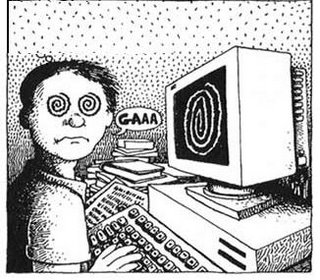
WRITING THE DANG THING
Yes. Writing. The eternal struggle. Coming up with ideas is the first, most enjoyable part (for me at least), the writing can also be fun. But also torture. So much torture. So many good intentions with a Can Do spirit. Efforts just laid to waste before you, as you stare into the middle distance, wishing you actually liked accounting, oh why can’t the writing be easy?!
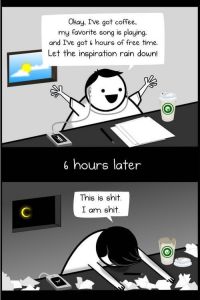
But wait… how are you going to write this? You can freestyle it by writing it by hand. Which every writer wants to do, but what’s the end game there? Do you wanna try and fax copies to your artist by hand, one at a time, on lined paper that look like a kidnapper demanding ransom? Isn’t it better to e-mail it? Or print it out like a human being? Yes, it is better. So get a computer!
Do you just go ahead and use the writing program that came with that laptop you “found”? Yes, you can do that. But it will look like a mess without a decent screenwriting format. And that format takes forever to tab and space on a basic writing program, take it from a dude that did that for an entire script. Yep, this guy. (I’m pointing at my face).
So get a screenwriting program!
Some cost money, but why not make the investment?

But… some are free to download from the internet. Save some of that money for future costs, right? CelTX is a fantastic program, with no cost.

I bought a program that I really like called Screenwriter.
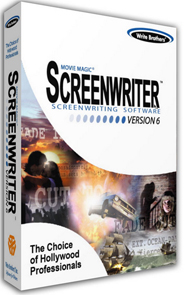
This program had the added bonus of having an actual format for COMIC BOOK SCRIPTS. Which I love, by the way.
Not that you need to write in any particular format other than a movie script. You could just use the script format as is and go from there. The only audience you’re writing for is the Artist. So think about the best, quickest, and clearest way to convey the images you want. So try to keep out of your head, and remember that the Artist doesn’t know what to draw, except for the details you give them.
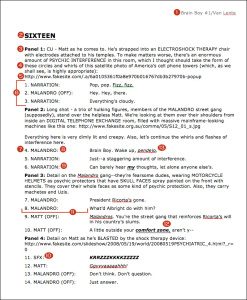
You will need:
PAGE: What page number it is in the comic.
PANEL DESCRIPTION: What’s happening in a given panel.
DIALOGUE: Who and what they are saying.
SOUND FX: What kind of sounds, or literally write it out. Ex: THOOM! (for explosions and such).
So, for example, here’s how a page of the script I wrote turned into a page from the comic book, courtesy of Amy Watson’s awesome art.

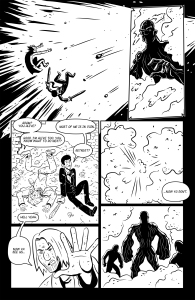
In my script, I said how many Panels there would be on page 3, but I told Amy, well before writing it, that she could change how many panels there were if she deemed it necessary. You don’t need to have a set number of panels on a page, but remember how much visual information you can convey on a given page. It can get too cluttered or small if you’re not careful, or too strict.
Also, keep in mind how much dialogue you write. Its always a balance of what the characters say, how much they say, and how much they NEED to say. Remember you’re writing a visual medium. You don’t need to get overly wordy, and can rely on your artist to convey parts of the story.
A standard comic book is roughly 22 to 24 pages, so try to outline your story ahead of time. Perhaps try and plan out the story beats per page. For example, page 01 will be the first visual the reader sees, so what do you want that to be? A black page with scattered words, to try and convey a lonely, scary feeling? Or a splash page filled with action, centering on a swashbuckling lead character? This all depends on the story you’re telling.
You don’t have to follow the 22 to 24 page length. You could be doing larger, fully contained story with maybe 50 pages, or even 100. But you still have limited space and panels to tell your story, always keep that in mind. Luckily, you have one person to explain this all to, and that’s your artist. Make sure to have a clear idea what your story is, and how you’re telling it, because your artist definitely needs you to have some kind of idea.
And as for the right mind frame for writing, you could always try my Six Step Method:

Okay, that’s it for Part 02! Come by again for Part 03 of So You Wanna Make a Comic Book? I will be talking about Editing, Designing the Right Cover Art, and Printing the Comic!
